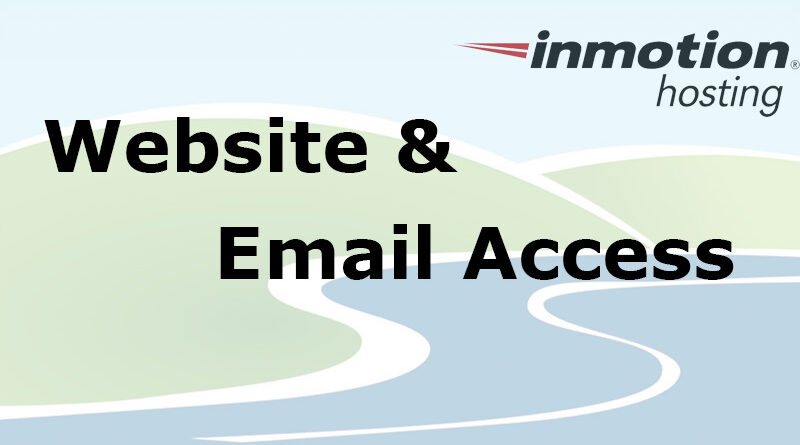Website and Email Access
On Monday, April 14th, InMotion suspended our hosting service for websites and email accounts. That resulted in a message that the websites were suspended and you would not be able to log into Webmail or Outlook (or other email client) because the password wasn’t working. Our account was suspended around 4:30pm.
I spoke with InMotion support and they were unwilling to unsuspend our account because we have had it suspended a couple times over the past few weeks. The suspension was due to high resource usage on our account. Even though InMotion support traced most of the issues to external software that was accessing our sites under the guise of indexing them for search websites, they dinged us for not being more proactive in blocking the software.
In order for InMotion to turn our sites back on, I had to agree to an upgraded service called a Virtual Private Server (VPS) instead of continuing on the Shared Server we’ve been using. InMotion did the migration for us and it was completed around 10:00pm. I verified that the websites were online and that we were able to log into them. Email accounts were also migrated and I was able to use our cPanel Dashboard to log into a few accounts to verify mail had been moved and that the accounts were active.
The password for your email should have migrated and allowed access after the migration. There have still been a few reports today, 4/15, of people not being able to log into email. Unfortunately, the reports have not all included additional information such as whether the issue is using Webmail (domain.org/webmail from a browser) or an email client like Outlook.
I’ve spoken with two libraries, one using Webmail and one using Outlook, and they were able to check email. The library using Webmail initially had a problem using a saved password in their web browser but when typing it in, the login worked. For Outlook, it appeared that it started working on its own. However, the library was seeing an error sending email. That may be a settings change we’ll need to make in Outlook and may need to be adjusted on a case-by-case basis. A third library that I didn’t speak with sent me an email from their account this morning on a topic unrelated to the hosting issue from last night.
To help correct the problems, we need to know if you’re still having problems with Webmail or a client like Outlook today (4/15). We need to know if you have an error and what that error is. If it’s a password, it also helps to know if you’re using a saved password in a browser or if you’re typing it in. If it’s with a client like Outlook, we need to know if it’s a password problem checking email or if it’s an issue sending, like the example above.
The best way to send this info is through our support tool. You can access it through the link on the top menu of our website. Even if you can’t get into your email, we’ll still get the ticket and then can call to help fix the issues you’re having.
We’ll try to call all of you at some point today to see if you’re able access your email but opening a ticket will still help track the issues.
Update 4:00 4/15/2025
The overnight migration of the website and emails should not have changed any passwords for email access. Today we’ve had multiple calls about being unable to log into Webmail via a web browser. The solution that has worked for most has been to clear the browser cache, close all browser windows, and re-open them. The following instructions are for Google Chrome but if you use a different browser, such as Microsoft Edge or Firefox, the goal is the same and the steps are similar. if you or staff are having trouble trying to access Webmail, please follow these steps and see if it corrects the issue. If you are having problems with either sending or receiving email in a client such as Microsoft Outlook, please contact the CNS department for additional help.
Clear Google Chrome Browser Cache
- Open Google Chrome and click on the “Customize and control Google Chrome” three dot menu on the top, right of the browser window.
- Click on “Settings” from the dropdown menu.
- On the Settings screen, click “Privacy and security” on the left menu.
- Click “Delete browsing data” in the Privacy and security section of the new screen.
- On the “Delete browsing data” window click the “Advanced” tab.
- Select “All time” from the “Time range” dropdown window.
- Check all of the boxes except “Passwords and other sign-in data.”
- Click the “Delete data” button.
- Close all Chrome browser windows and then re-open Chrome.

